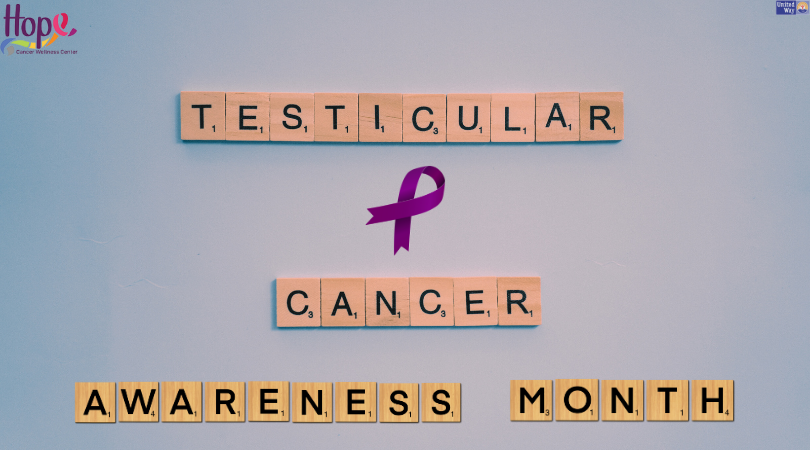
Testicular Cancer Awareness Month: Early Detection Saves Lives
April is Testicular Cancer Awareness Month, a time dedicated to educating the public about this often-overlooked cancer and the importance of early detection. While testicular cancer may not be as widely talked about as other forms of cancer, it’s crucial to understand the risks, symptoms, and steps to take for prevention and early diagnosis.
In this post, we’ll dive into the key facts about testicular cancer, share tips on how to detect it early, and explain why awareness and education are so important.
What is Testicular Cancer?
Testicular cancer is a type of cancer that originates in the testicles (or testes), which are part of the male reproductive system. The condition is relatively rare compared to other cancers, but it’s the most common cancer in young men between the ages of 15 and 35. While the survival rate for testicular cancer is high when detected early, it’s essential to take proactive steps to catch the disease before it spreads.
There are two main types of testicular cancer: seminomas and non-seminomas. Seminomas tend to grow more slowly, while non-seminomas can grow more quickly. Both types are highly treatable when detected early.
Key Symptoms of Testicular Cancer
One of the challenges with testicular cancer is that its symptoms may be subtle or mistaken for other conditions. However, it’s essential to be aware of the signs so that you can seek medical attention if needed. Common symptoms of testicular cancer include:
- A lump or swelling in one or both testicles: This is the most common symptom. The lump may feel hard or painless, and it’s often the first sign that something is wrong.
- Pain or discomfort: Some men experience pain or discomfort in the testicle, scrotum, or groin area. It may feel like a dull ache or a sharp pain.
- Changes in the size or shape of a testicle: You may notice that one testicle has become larger or heavier than the other.
- A feeling of fullness or heaviness in the scrotum: This can happen without any visible swelling but may still indicate an issue.
- Pain or discomfort in the lower abdomen or back: This could be a sign that the cancer has spread beyond the testicle, although it is less common in the early stages.
If you notice any of these symptoms, it’s important to consult a healthcare provider as soon as possible. Early detection and diagnosis significantly improve the chances of successful treatment.
How to Perform a Self-Examination
One of the most effective ways to detect testicular cancer early is by performing regular self-examinations. It’s recommended that men perform a testicular self-exam once a month to look for any changes. Here’s how to do it:
- Examine your testicles after a warm bath or shower: The skin of the scrotum will be more relaxed, making it easier to feel for any lumps or changes.
- Gently roll each testicle between your thumb and fingers: You should be able to feel the entire surface of each testicle. Look for any hard lumps or irregularities.
- Check the epididymis: This is the soft, tube-like structure on the back of the testicle. It’s normal to feel this, but if you notice anything unusual, like swelling or pain, get it checked out.
- Look for swelling: If you notice any swelling, tenderness, or changes in the size or shape of your testicles, it’s important to see a doctor immediately.
It’s important to note that a self-exam won’t always catch every type of testicular cancer, but it’s still a helpful tool for detecting abnormalities early.
Why Early Detection is Crucial
The survival rate for testicular cancer is very high, especially when it is detected in its early stages. In fact, the overall five-year survival rate for testicular cancer is about 95%. However, the chances of successful treatment drop significantly if the cancer is allowed to spread. Early detection through regular self-exams and awareness of the symptoms are essential for ensuring the best possible outcome.
In addition to self-exams, regular check-ups with a healthcare provider are important for early detection. A doctor may conduct a physical exam, blood tests, and imaging studies to diagnose testicular cancer if there is suspicion of the disease.
Raising Awareness During Testicular Cancer Awareness Month
Testicular Cancer Awareness Month is a time to spread the word about the importance of early detection and to encourage men to be proactive about their health. By talking openly about testicular cancer, we can reduce the stigma around discussing male reproductive health and encourage individuals to take action if they experience any concerning symptoms.
Throughout April, many organizations, support groups, and cancer centers offer resources and information about testicular cancer. This is an opportunity for everyone to learn more about the disease, share resources with others, and advocate for early screenings.
How You Can Help
There are many ways to get involved in Testicular Cancer Awareness Month and make a difference:
- Share information: Talk to friends, family members, and coworkers about testicular cancer, the importance of early detection, and how to perform a self-examination.
- Support a cause: Many organizations are dedicated to testicular cancer awareness and research. Consider donating to a charity or participating in fundraising events.
- Wear purple: Purple is the official color of testicular cancer awareness. Wearing a purple ribbon or clothing during April can help start conversations and raise awareness.
- Participate in campaigns: Many organizations host awareness campaigns, runs, and events to raise both awareness and funds for research. Join in and support these efforts.
Conclusion
Testicular cancer is a highly treatable form of cancer, but early detection is key to improving survival rates. During Testicular Cancer Awareness Month, take the time to educate yourself, perform regular self-exams, and talk openly about the disease. Remember that awareness and early intervention can save lives.
If you or someone you know is experiencing any symptoms of testicular cancer, don’t hesitate to reach out to a healthcare provider. The sooner testicular cancer is detected, the better the chances of successful treatment and recovery.
